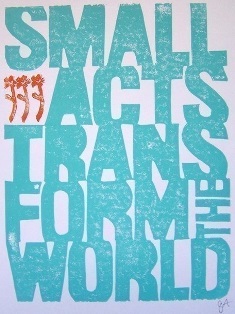“The things we’ve been taught to think about giving and charity and the non-profit sector are actually undermining the causes we love … Our social problems are massive in scale, our organizations are tiny up against them — and we have a belief system that keeps them tiny”. – Dan Pallotta
In a 2013 TED Talk, the author of the book Uncharitable Dan Pallotta talked about the damaging mindset society has towards public sector growth and innovation. From salaries to scale, Mr. Pallotta looked at the barriers to success we place on non-profit organizations.
Most people judge the quality of a charity by seeing how much of a donation actually goes straight to the cause. For example, you might be unhappy if only $79 of your $100 donation went to its specified cause (with $8 going to administrative costs and $13 going to marketing).
It’s understandable to feel this way; you’re giving away your hard earned money to an organization you are choosing to trust. You want to see the impact your money has on the project you chose. You’re giving your money to give puppies a home or provide disadvantaged women vocational training, not to help pay the organization’s advertisement bill. Right?
But, in fact, the way we assess and critique the non-profit sector is actually hurting the public sector’s ability to create lasting and meaningful change. Our current mindset pigeonholes organizations, rather than giving them the freedom to thrive.
Here are four critical ways in which you, (we are assuming you are part of the North American donor base), can change how you critique charities:
1. Compensation
The way we evaluate worker salaries in the public sector versus private sector is a truly unfortunate disservice to non-profits. Why is it that we are content to pay a hefty sum for top performance from corporate CEOs, but resent rewarding non-profit directors for a job well done helping others?
We reward people for making money by giving them more money, yet for people who use their time and energy to help of others, we fail to properly recognize and honour their selflessness.
“This is what happens when we confuse morality with frugality.” – Dan Pallotta, Creator of the AIDS Rides
2. Advertising
Donors today refuse to grant the same permission to charities as businesses to use a large portion of their budget for advertising. Once again, it’s fine for firms to advertise to boost consumer base and profits, but not for NGOs.
Over the last forty-five years, the percentage of gross domestic product (GDP) donated in North America has remained at 2%. This clearly shows that charities need to do something to attract more donations, namely a strong advertising platform.
We need consumers to be exposed on a daily basis to different ways to help those less fortunate in the same way consumers are bombarded by different things to buy. Advertising is a way for non-profits to gain exposure, teach the public about local and global issues, and increase its reach.
3. Risk
Another barrier that society places on the non-profit sector is risk aversion. Corporations are celebrated for ‘taking the plunge’ or ‘treading new waters’, but consumers aren’t OK with NGOs to taking risks and fostering innovation.
It’s understandable that donors don’t want their hard earned money to go towards a project that doesn’t end up achieving its goals. It’s one thing if a business project fails, since no one is hurt when a product does not launch. On the other hand, when a philanthropic project fails individuals/animals/environment suffer.
Investors are taught that there are always risks in business, but donors are not taught the same for charities. Society deters NGOs away from taking risks because if a project fails, the consumers question the quality of the organization, and the character of its CEO. Yet, the only way for us to really conquer global poverty or substantially reduce our carbon footprint is through innovation; we need to give NGOs the tools and support to dream and experiment.
4. Time
The age old saying, “good things take time” could not be more true. This has been proven time and time again in the private sector when big projects become successful after lots of tweaking and regrouping. Unfortunately, consumers today aren’t prepared to give the same opportunities to the public sector.
Society demands instant results from charities. Donors expect the non-profit to achieve each and every predicted outcome in short order. Donors are less likely to support an NGO that wants to implement a long-term project where outcomes will take many years to be achieved.
Yes, it’s much faster, and the results are quantifiable, to build schools for girls in Afghanistan; building four schools per year and educating three hundred young females are direct and desirable outcomes.
Yet going around a country, holding community meetings to challenge the status quo and discuss building new norms, can have a much deeper and longer lasting impact. This is the path to take to create systemic transformation, even if the results aren’t as easy to see or take longer to achieve.
If the public sector is going to create long term, sustainable change, society needs to provide organizations the permission and freedom to take not risks and take time. Organizations need time to develop an initiative, time to nurture participant relations, and time to properly implement the project. They need time to allow the initiative to either plant roots within the participating community or to allow the community to gradually take over of the initiative.
Donors today need to reconsider four major aspects of how we judge the public sector and how it operates:
- Compensation
- Advertising
- Risk
- Time
Society today, with more and more social issues threatening global peace and development, needs to change the way it thinks about charities. We need to stop concerning ourselves about the costs of paying good people to execute non-profit missions, and focus on introducing “good” into every aspect of all industries.





